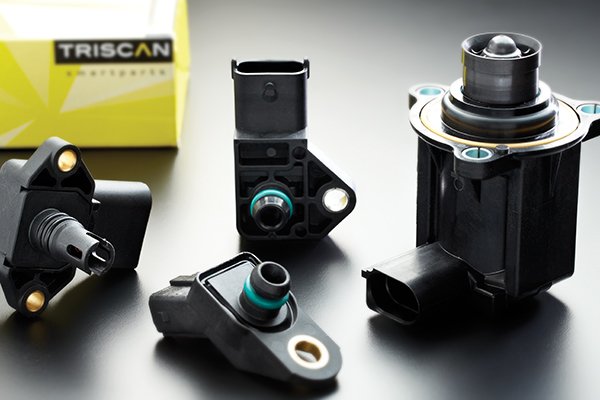Triscan's sensor family has gained yet another member. More than 200 references are stocked and ready for delivery. As always, these are OE-quality sensors, which are 100% function-tested - and the programme is wide-ranging in relation to the European car park.
Behind the abbreviation MAP lies Manifold Air Pressure, which is measured in the intake manifold. The MAP sensor measures the pressure in the intake manifold for use in the vehicle’s engine control (ECU). In some cases, the MAP sensor also includes a temperature sensor for measuring the air temperature. The information is included in the calculation of the load ratio of the engine used to control the mixture of air and fuel, as well as the ignition timing.

MAP sensors are the latest product group in Triscan's sensor programme
The MAP sensor has a pressure sensor and an electronic circuit that generates a voltage signal that changes with respect to pressure. The voltage signal is typically between 1 and 5 volts. The output voltage is increased when a vacuum drop is detected which occurs when gas is given. At idle, where the largest vacuum is detected - about 20 kPa, the voltage is typically between 1.0 and 2.0 volts. Conversely, it is at full throttle between 4.5 and 5.0 volts - about 80 kPa. The read voltage typically changes by about 1.0 volts when the vacuum is changed by 20 kPa. For versions with a built-in temperature meter, the measuring range is generally between -40 and 120 ° C. 65 kOhm at -40 ° C and 100 ohms at 120 ° C.

Cross section of a MAP sensor
There are mainly two types of MAP sensors:
• 3-poles - without integrated temperature sensor
• 4-poles - with integrated temperature sensor

For testing purposes, we have our own MAP-tester in our in-house test center








